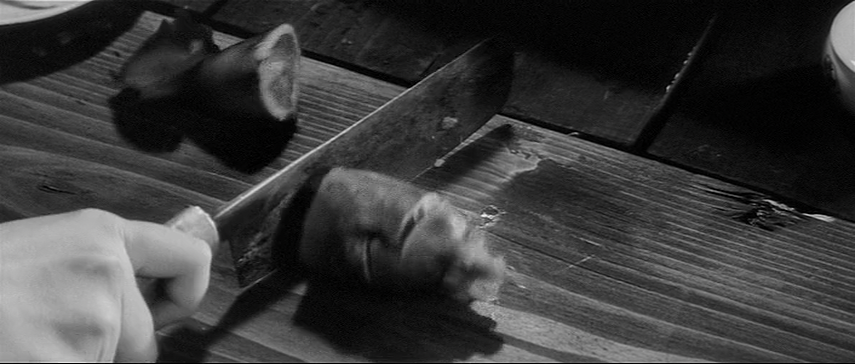”'I know how you feel,' Reiko says quietly. 'And I will follow you wherever you go.'”憂國 [Yūkoku / Patriotism or the Rite of Love and Death] (Yukio Mishima, 1966)
Feb
26
1936

Reiko (Yoshiko Tsuruoka) walking through her lover's blood, her kimono drenched. DP: Kimio Watanabe.
Covers February 26–28, 1936.
– intertitles
japan
“I'm sharing my husband with a cat. This is humiliating!”猫と庄造と二人のをんな [Neko to Shōzō to futari no onna / A Cat, Shozo, and Two Women] (Shirō Toyoda, 1956)
Feb
20
Love Your Pet Day
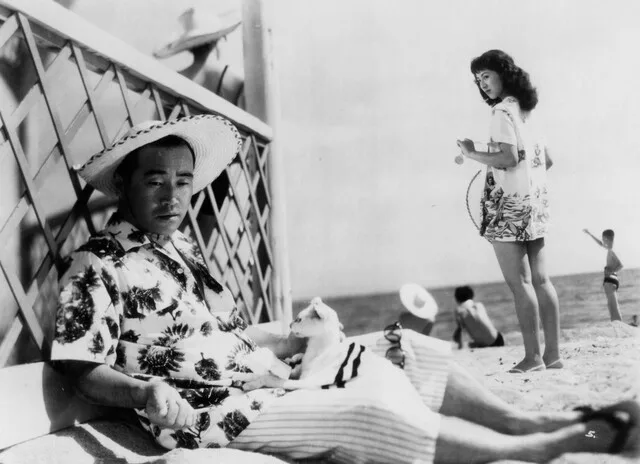
Shōzō (Hisaya Morishige) on the beach with his beloved cat Lily. DP: Mitsuo Miura.
Someone owns a pet on Love Your Pet Day (UK)
– Nakajima
Shōzō is torn between his ex-wife and his current spouse, but really just wants to spend time with Lily, his cat.
野獣死すべし [Yajū shisubeshi / The Beast Shall Die] (Eizō Sugawa, 1959)
Feb
17
airline food

Kunihiko Date (Tatsuya Nakadai) enjoys an in-flight meal. DP: Fukuzō Koizumi.
燃えつきた地図 [Moetsukita chizu / The Man Without a Map / The Ruined Map] (Hiroshi Teshigahara, 1968)
Feb
2

Shintarō Katsu and Etsuko Ichihara as the detective and the missing man's wife, their faces and gestures warped by a paned window. DP: Akira Uehara.
“You'll feel better soon. Once you're used to the mask, you'll be a new man — one with no records, no past. A mind invisible to the world.”他人の顔 [Tanin no kao / The Face of Another] (Hiroshi Teshigahara, 1966)
Jan
3
Tutankhamun's tomb
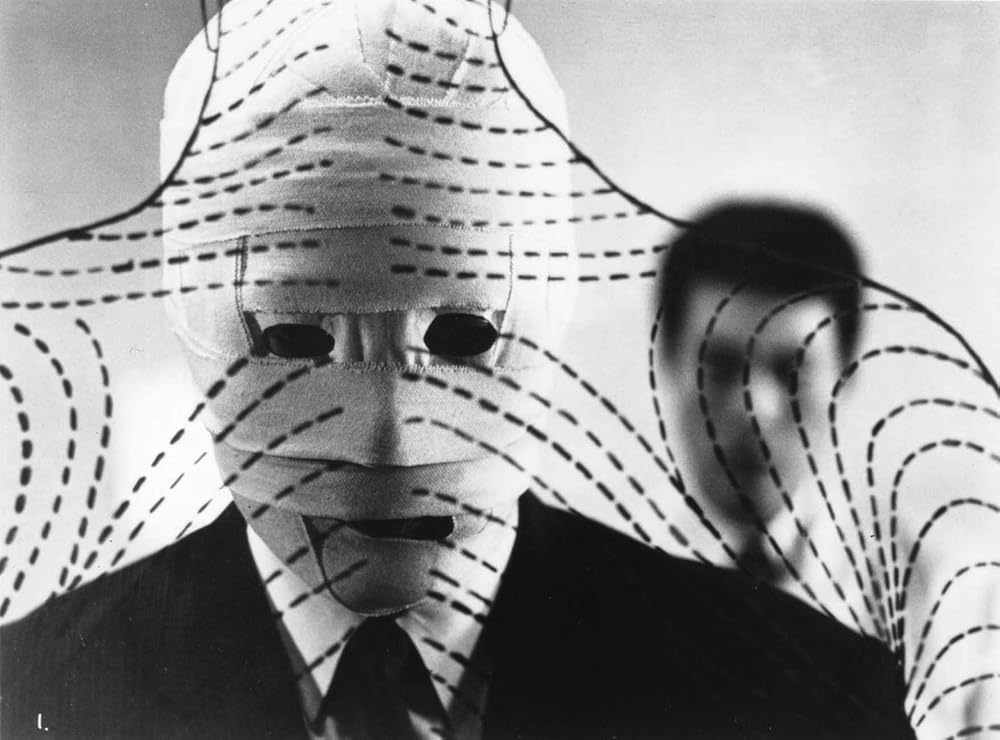
Mr. Okuyama (Tatsuya Nakadai). DP: Hiroshi Segawa.
Bandages for that day in 1924 when Howard Carter came across Tutankhamun's sarcophagus.
– psychiatrist
儀式 [Gishiki / The Ceremony] (Nagisa Ōshima, 1971)
Jan
1
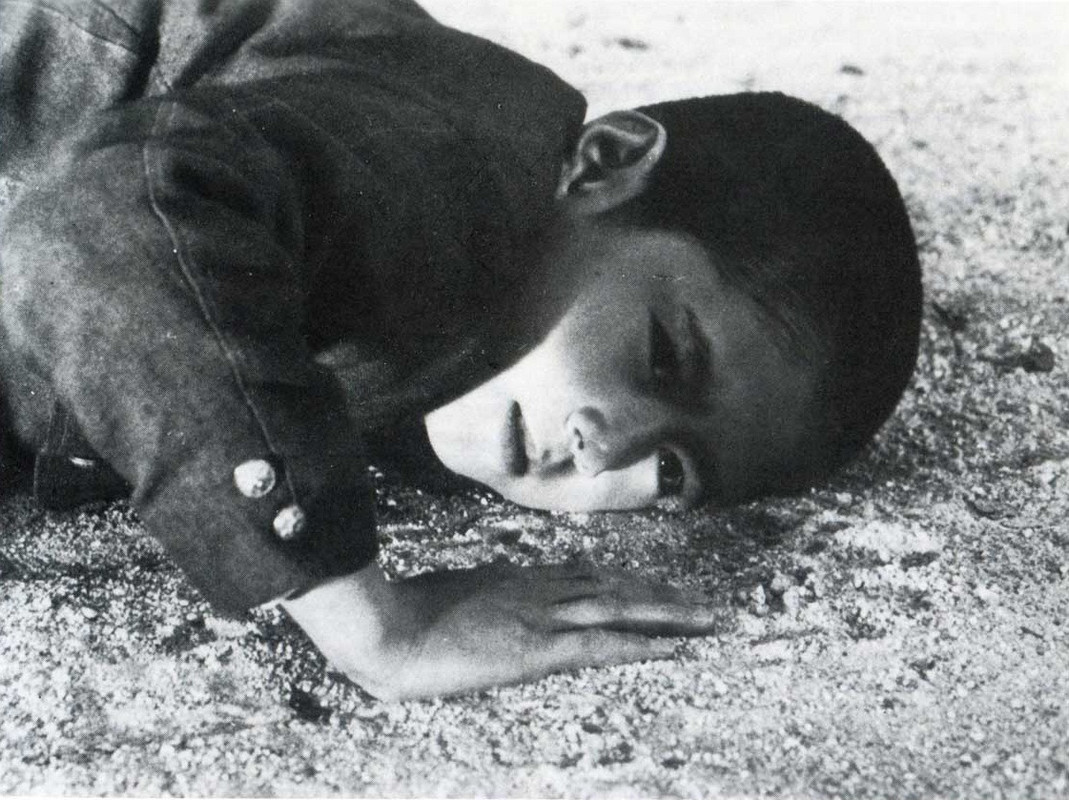
A boy in school uniform has his ear pressed against the ground. DP: Tōichirō Narushima.
浪華悲歌 [Naniwa erejī / Osaka Elegy] (Kenji Mizoguchi, 1936)
Dec
15
International Tea Day

A woman in kimono sits at a low wooden tea cabinet. It holds a small tea pot and other utensils. The traditional setup is broken in the background with contemporary Western furniture. She's smoking. DP: Minoru Miki.
Something with tea for International Tea Day.
荒野のダッチワイフ [Kōya no dacchi waifu / Dutch Wife of the Wasteland] (Atsushi Yamatoya, 1967)
Dec
13
ice cream
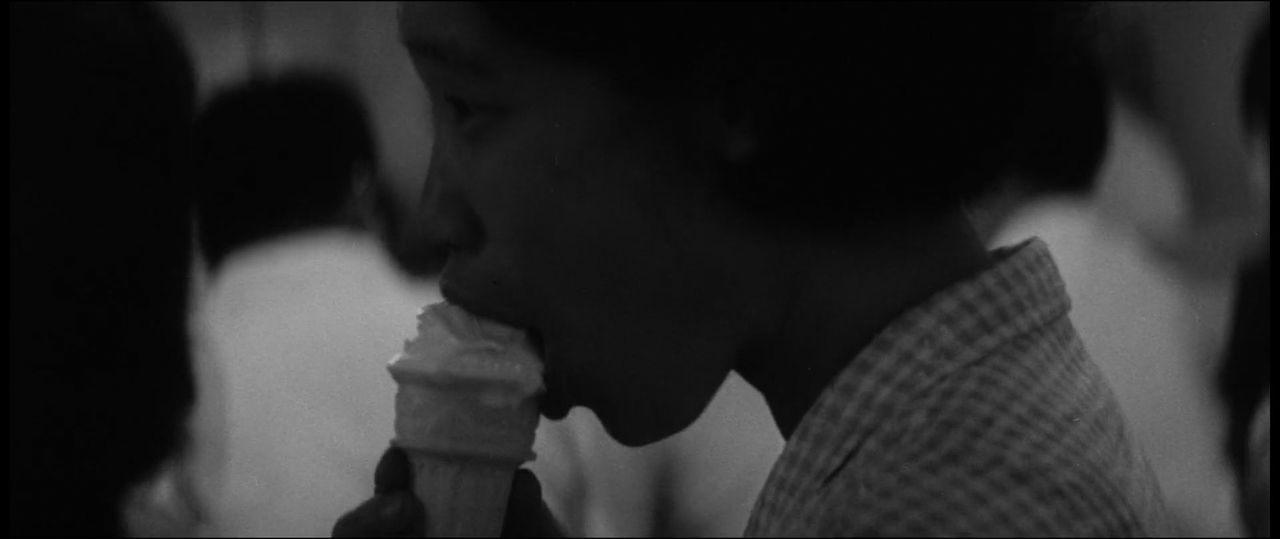
A young woman in profile, almost a silhouette, eats ice cream. DP: Hajime Kai.

